#Environmental Working Group
Explore tagged Tumblr posts
Text
Farmers Sued Over Deleted Climate Data. So the Government Will Put It Back.
The Agriculture Department will restore information about climate change that was scrubbed from its website when President Trump took office, according to court documents filed on Monday in a lawsuit over the deletion. The deleted data included pages on federal funding and loans, forest conservation and rural clean energy projects. It also included sections of the U.S. Forest Service and Natural…
#Agriculture and Farming#Agriculture Department#Clayton#Environmental Working Group#Global Warming#Greenhouse Gas Emissions#Natural Resources Defense Council#Northeast Organic Farming Assn#Suits and Litigation (Civil)#United States Politics and Government#Walter J
0 notes
Text
IL CANDIDATO CINESE, PRESIDENTE DELL'EWG DELL'APEC 2025-2026
2024-08-17 17:54:50 Al 68esimo incontro del gruppo di lavoro sull’energia (EWG) dell’APEC appena concluso, il candidato cinese è stato eletto Presidente del gruppo di lavoro sull’energia dell’APEC per il 2025-2026. Mirando agli obiettivi di “dual carbon” (raggiungimento del picco delle emissioni di anidride carbonica prima del 2030 e neutralità carbonica prima del 2060) la Cina sta accelerando…
#acqua#Agricoltura#ambiente#Asia-Pacific Economic Cooperation#cooperazione#ecologia#Environmental Working Group#inquinamento
0 notes
Text

The Mona Lisa Painting Attacked in Paris
Protesters hurled soup at the Mona Lisa painting in Paris on Sunday, but it was protected from damage by its glass casing.
The environmental group Riposte Alimentaire – which roughly translates to “Food Response” – said two protesters involved with their campaign were behind the vandalism.
The Louvre has since reopened the “Salle des Etats” room which houses the Mona Lisa after it was evacuated.
“Two activists from the environmental movement ‘Riposte Alimentaire’ sprayed pumpkin soup on the armoured glass protecting the Mona Lisa, this Sunday, January 28, 2024, around 10am (4aET),” a statement from the museum said.
“The Louvre’s security staff immediately intervened.”
The museum said it was lodging a complaint.
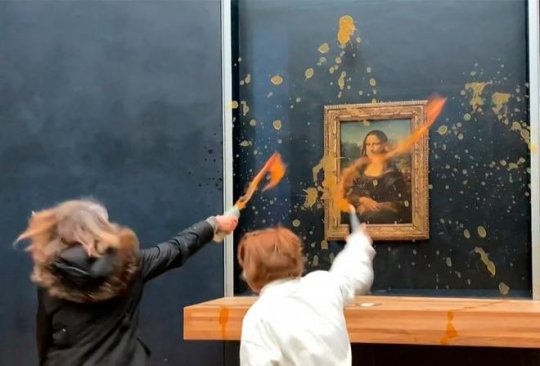

Leonardo da Vinci’s masterpiece the Mona Lisa hangs in the Louvre museum and is arguably the most famous painting in the world, drawing millions of visitors each year who line up to pose with the small artwork, which is just over 2.5 feet tall and under 2 feet wide.
The enigmatic portrait is no stranger to both vandalism and thievery.
It was stolen in 1911 by a Louvre employee, raising its international profile, and the bottom of the canvas suffered an acid attack in the 1950s, leading the museum to beef up protective measures surrounding the work, including bulletproof glass.
In 2009, a woman angrily threw a ceramic cup at the painting, breaking the cup but leaving the painting unharmed.
Then in 2022, a visitor smeared frosting all over the Renaissance-era painting’s protective glass.
By Stephanie Halasz and Chris Liakos.
#Leonardo da Vinci#Leonardo da Vinci The Mona Lisa#The Mona Lisa Painting Attacked in Paris#The environmental group Riposte Alimentaire#Salle des Etats#the Louvre museum#italian artist#painter#painting#art#artist#art work#art world#art news
50 notes
·
View notes
Text
A detective who regularly investigates weird and inventive murders decides to start a blog…
Unfortunately rather than writing about his job, he decides to write about his interests: a collection of the most boring subjects known to man.
#welcom to this#my stealth death in paradise post that anyone can enjoy#I know next to none of you watch death in paradise but this is genuinely a through line they have going right now and it fucking rules#my guy (a man with four friends) started this week’s episode complaining that only four people had read his blog#and by the end of the episode even his massively supportive friend group don’t seems to be able hack it anymore#because by the end of the episode being read by one lone fringe weirdo#Nevil I of all people love and support your autistic ass but more people will read your blog if you mention your work some times#that said I would quite like to know if he told the blog that the environmentally friendly mosquito repellent didn’t work#or if he’s pretending it did for the sake of his public image and the hope of getting brand sponsorship#death in paradise
47 notes
·
View notes
Text

The term "affinity group" is the English translation of the Spanish grupo de afinidad, which was the name of an organizational form devised in pre-Franco days as the basis of the redoubtable Federación Anarquista Ibérica, the Iberian Anarchist Federation. (The FAI consisted of the most idealistic militants in the CNT, the immense anarcho-syndicalist labor union.) A slavish imitation of the FAI's forms of organization and methods would be neither possible nor desirable. The Spanish anarchists of the thirties were faced with entirely different social problems from those which confront American anarchists today. The affinity group form, however, has features that apply to any social situation, and these have often been intuitively adopted by American radicals, who call the resulting organizations "collectives," communes" or "families."
The affinity group could easily be regarded as a new type of extended family, in which kinship ties are replaced by deeply empathetic human relationships—relationships nourished by common revolutionary ideas and practice. Long before the word "tribe" gained popularity in the American counterculture, the Spanish anarchists called their congresses asambleas de las tribus—assemblies of the tribes. Each affinity group is deliberately kept small to allow for the greatest degree of intimacy between those who compose it. Autonomous, communal and directly democratic, the group combines revolutionary theory with revolutionary lifestyle in its everyday behavior. It creates a free space in which revolutionaries can remake themselves individually, and also as social beings.
Affinity groups are intended to function as catalysts within the popular movement, not as "vanguards"; they provide initiative and consciousness, not a "general staff" and a source of "command." The groups proliferate on a molecular level and they have their own "Brownian movement." Whether they link together or separate is determined by living situations, not by bureaucratic fiat from a distant center. Under conditions of political repression, affinity groups are highly resistant to police infiltration. Owing to the intimacy of the relationships between the participants, the groups are often difficult to penetrate and, even if penetration occurs, there is no centralized apparatus to provide the infiltrator with an overview of the movement as a whole. Even under such demanding conditions, affinity groups can still retain contact with each other through their periodicals and literature.
During periods of heightened activity, on the other hand, nothing prevents affinity groups from working together closely on any scale required by a living situation. They can easily federate by means of local, regional or national assemblies to formulate common policies and they can create temporary action committees (like those of the French students and workers in 1968) to coordinate specific tasks. Affinity groups, however, are always rooted in the popular movement. Their loyalties belong to the social forms created by the revolutionary people, not to an impersonal bureaucracy. As a result of their autonomy and localism, the groups can retain a sensitive appreciation of new possibilities. Intensely experimental and variegated in lifestyles, they act as a stimulus on each other as well as on the popular movement. Each group tries to acquire the resources needed to function largely on its own. Each group seeks a rounded body of knowledge and experience in order to overcome the social and psychological limitations imposed by bourgeois society on individual development. Each group, as a nucleus of consciousness and experience, tries to advance the spontaneous revolutionary movement of the people to a point where the group can finally disappear into the organic social forms created by the revolution.
#affinity groups#definition#community organizing#community building#practical anarchy#practical anarchism#anarchist society#practical#revolution#anarchism#daily posts#communism#anti capitalist#anti capitalism#late stage capitalism#organization#grassroots#grass roots#anarchists#libraries#leftism#social issues#economy#economics#climate change#climate crisis#climate#ecology#anarchy works#environmentalism
7 notes
·
View notes
Text
:)
#i have a thought spiral i want to share#it's about ai! such fun#ok so i am a student again since last year right#and the one thing that immediately became so obvious is how integrated chatgpt has become like#students have it open during class and ask it questions during group discussions and make summaries with it#and for writing assignments you have to say if and in what way you used ai#etc. like it's everywhere#ALSO at work (i teach) there's been a lot of attention for it like how to integrate it in your classes and make materials with it etc#like there's actual workshops for it and a lot of people use it i feel like#BUT MY THING IS#ok so today i was working on an assignment and i always put a lot of work in them right? like it's a whole Process and i take pride in it#but they also always just take a really long time#and so i was sitting there today and the sun was shining outside and i was just asking myself like#why am i holding on so much to not using it? bc i honestly just utilise to write my assignments and they would be done so much quicker#and I'd have time to do fun things right??#but it's JUST. my problem with it IS#i hate what it stands for right? like it's such a part of this culture where everything always needs to be better and faster#and more productive#like if i can have ai write my emails then i can send more emails and i can get more done and it just feels like suck a part of the “more!!”#(it's like those medicine that energise you or painkillers with caffeine in them like holy fuck people don't need that they just need REST)#and then ALSO#like i said earlier i put a lot of time an effort into writing assignments and i dont mean that in a holier than thou way it's just#there's so much to say for the writing process and thinking about what to include and what to put where and how phrase things#and if we let go of that and just let everything be written by machines like#where is de eigenheid?? (the dutchies will get it i think the english word would be singularity? idiosyncrasy? just the YOU in a text)#just like why is everyone just ok with giving up so much!!!!! why are people okay with not thinking anymore and letting the machines#think for them!!!!!!#that is all not to even MENTION the environmental impact of it all#everything about it infuriates and baffles me#but then also maybe i should just let chatgpt help w my assignments so i can enjoy the sun yk? honestlyyyy idek anymore
3 notes
·
View notes
Text
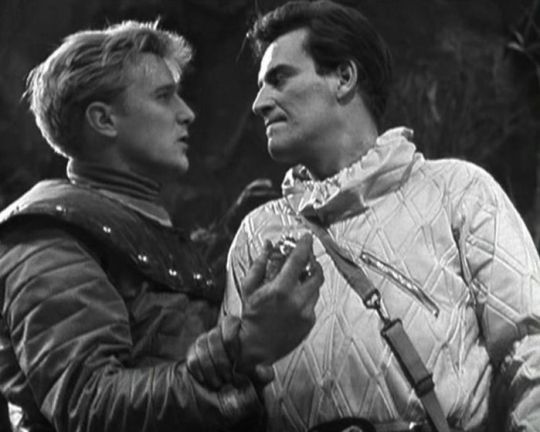
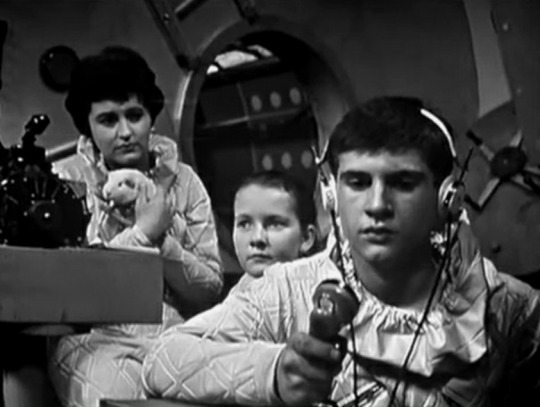
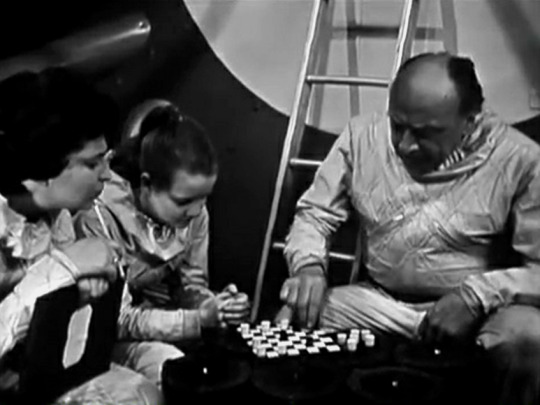
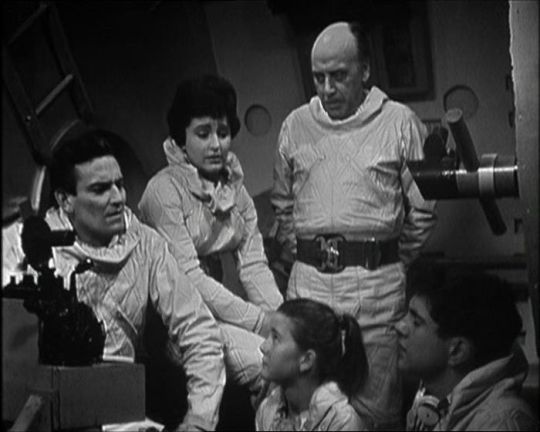

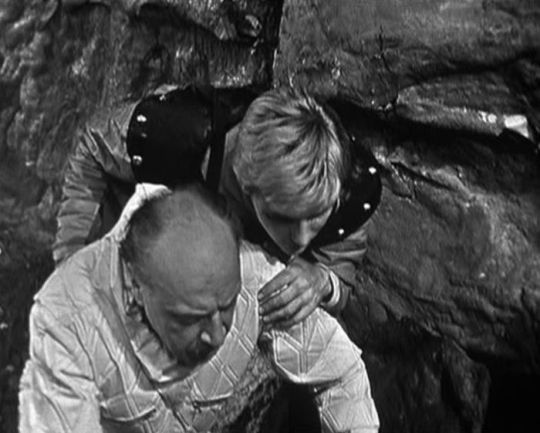
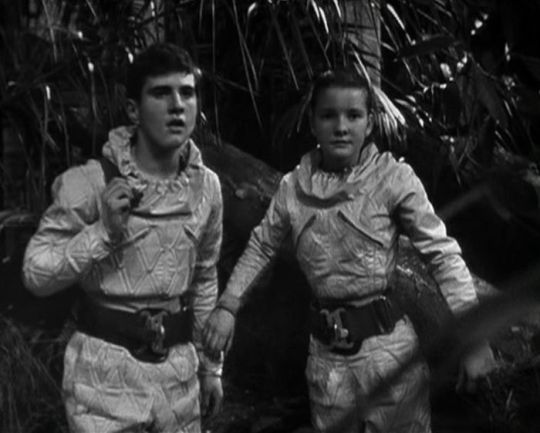
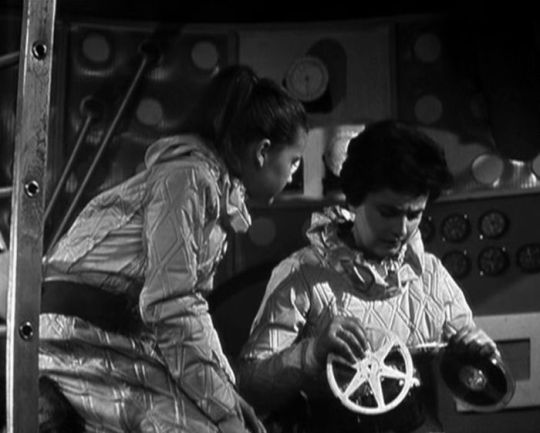

Pathfinders to Venus (ABC, 1961)
"What a paradise this place is. The way Earth must have been before man spoiled it with sprawling towns and filthy machines."
"If it hadn't been for man's filthy machines we wouldn't be here."
"That's true. And the pity of it is that after us will come rocket after rocket to ravage this planet. They'll gouge the minerals out of the earth, destroy the forests and eventually they'll go to war over it."
#pathfinders to venus#1961#children's television#classic tv#abc#malcolm hulke#eric paice#guy verney#reginald collin#gerald flood#george coulouris#graydon gould#pamela barney#hester cameron#stewart guidotti#brigid skemp#hugh evans#bob bryan#astor sklair#robert james#third and final sequel to the sadly missing Target Luna serial; this one picks up immediately after the previous story‚ Pathfinders to Mars#and sees our heroic group once again strongarmed into space exploration by the trickery of George Coulouris (bf's hatred for the character#reached new strengths during this series). this serial delves further into the sci fi fantasy vibe: where Space saw some remnants of#interstellar travel discovered and Mars had some plants and stuff‚ this one has full on alien contact with the native Venusians (handily#very much humanoid). this one also allows the real world to intrude more simultaneously tho; the Cold War‚ having hummed along happily very#much in the background so far‚ gets faced head on here as US and Soviet interests finally start to complicate the plans of our plucky (and#somehow‚ so far‚ entirely apolitical) British explorers. good old Mac Hulke gets a couple of very strong and very prescient environmental#messages in too‚ prefiguring his work on Doctor Who in the 70s (and right you were Mac‚ tho did you have to give those lines to the maniac#character who keeps almost getting everybody killed because of his blind insistence on seeking out some great Spacey Truth..)#these serials have been a lot of fun and I'd highly recommend them to any fan of old tv or old sci fi or DW or the like
11 notes
·
View notes
Text
im getting to be one of those conservative strawmen who wants to ban children from learning about god
#got so creeped out at work today overhearing a parent chaperone [christian elementary school] praise a kid who was hugging a tree 2 b funny#by saying ''look at you caring for God's creation! ^_^''#like eurgh. no girl you shouldnt like a tree because you think god made it for you. just like it for what it is -_-#just so it's clear. i dont work at a christian elementary school. i work at an environmental center#there was a school group i was teaching#hark
13 notes
·
View notes
Text
i'm so glad i don't feel the urge to have to political post on the blog anymore.
#like. if you know me then you know what i believe in#which is. the value of every life.#the importance of providing every person on the planet what they need to live with safety and dignity.#and the necessity of mitigating opposition to that goal and limiting harm to The World#as much as is possible as one person living under the conditions of our current reality#with hope and effort toward making our future reality one where we are increasingly able to care for one another#instead of engaging in an endless competition of profit and imagined division that causes immeasurable suffering and death.#like. from that philosophy i think you can determine my stance on anything that matters.#The Game Of Politics is only important insofar as it impacts actual lives.#and we should all be thinking bigger than that. like. yknow. abolishing borders altogether. dismantling capitalism worldwide.#creating a global society that benefits as many individual human people as possible.#so like. yeah. i'm going to vote. i'm not gonna be happy about it because there is no one on the ballot that actually represents my values.#because fundamentally all politicians are going to enforce and uphold a system that is inherently oppressive and authoritarian#but. there are some politicians who will cause more harm than others.#and their policies will make a difference in many lives.#and i feel personally obligated to try to Lessen The Harm. since there is nothing i can presently do to Eliminate The Harm.#like. idk. we're not gonna vote our way out of the root of the issues. but we can vote our way out of Some Degree of Some issues. like. idk#abortion. deregulation. environmental initiatives. etc. that stuff makes Some Difference to A Lot Of People.#(none of this passes judgment on those who are abstaining from voting for president because of the continuing genocide in palestine.#i do sincerely understand not being able to stomach it. and if the dems lose then it's only their own fault for being spineless fucks)#but like. if i can vote for somebody who IS LESS LIKELY to directly jeopardize the lives of certain groups of marginalized people#then. i'm gonna... do that. while continuing to work toward & believe in a better fairer freer future for everyone.#ANYWAY. that's my ONE political post for the year. steps off my soapbox.#izzy.txt
5 notes
·
View notes
Text
Something I don't think we talk enough about in discussions surrounding AI is the loss of perseverance.
I have a friend who works in education and he told me about how he was working with a small group of HS students to develop a new school sports chant. This was a very daunting task for the group, in large part because many had learning disabilities related to reading and writing, so coming up with a catchy, hard-hitting, probably rhyming, poetry-esque piece of collaborative writing felt like something outside of their skill range. But it wasn't! I knew that, he knew that, and he worked damn hard to convince the kids of that too. Even if the end result was terrible (by someone else's standards), we knew they had it in them to complete the piece and feel super proud of their creation.
Fast-forward a few days and he reports back that yes they have a chant now... but it's 99% AI. It was made by Chat-GPT. Once the kids realized they could just ask the bot to do the hard thing for them - and do it "better" than they (supposedly) ever could - that's the only route they were willing to take. It was either use Chat-GPT or don't do it at all. And I was just so devastated to hear this because Jesus Christ, struggling is important. Of course most 14-18 year olds aren't going to see the merit of that, let alone understand why that process (attempting something new and challenging) is more valuable than the end result (a "good" chant), but as adults we all have a responsibility to coach them through that messy process. Except that's become damn near impossible with an Instantly Do The Thing app in everyone's pocket. Yes, AI is fucking awful because of plagiarism and misinformation and the environmental impact, but it's also keeping people - particularly young people - from developing perseverance. It's not just important that you learn to write your own stuff because of intellectual agency, but because writing is hard and it's crucial that you learn how to persevere through doing hard things.
Write a shitty poem. Write an essay where half the textual 'evidence' doesn't track. Write an awkward as fuck email with an equally embarrassing typo. Every time you do you're not just developing that particular skill, you're also learning that you did something badly and the world didn't end. You can get through things! You can get through challenging things! Not everything in life has to be perfect but you know what? You'll only improve at the challenging stuff if you do a whole lot of it badly first. The ability to say, "I didn't think I could do that but I did it anyway. It's not great, but I did it," is SO IMPORTANT for developing confidence across the board, not just in these specific tasks.
Idk I'm just really worried about kids having to grow up in a world where (for a variety of reasons beyond just AI) they're not given the chance to struggle through new and challenging things like we used to.
37K notes
·
View notes
Text
New rule I'm making for myself: never accept or join anything that doesn't have a clear exit strategy.
#Sponsored by me being voluntold to join an environmental group at work and the first meeting was boring af#And now in stuck with it for at least the next year and I think my brain will atrophy from the bore#the woes of an engineer#It's so boring and there's no way I can figure out to become interested by it
1 note
·
View note
Text

The Challenges of Open Spaces
CrimethInc. occupies an awkward position when it comes to debates about privilege and oppression. As a point of entry for many who are not previously familiar with anarchism, CrimethInc. brings together people with a wide range of critiques and levels of awareness. Since the turn of the century, CrimethInc. projects have increasingly engaged with the power dynamics associated with race and gender, although this has not necessarily carried over to those discovering anarchism through those projects. From one side, some reactionaries dismiss this engagement as mere “identity politics,” implying that it has nothing to do with revolutionary struggle. From the other side, critics who know little about CrimethInc. projects besides the cover of a book published in 2001 continue to attempt to conscript the collective to serve as a straw man representing everything wrong with anarchism. Being highly visible means that CrimethInc. projects are often associated with those who consume them more so than with those who produce them. It also means that many people use CrimethInc. as a projection screen on which to impose the images of whatever enemies they wish to contrast against themselves.
Over the past few years, CrimethInc. convergences have served as an introductory space for hundreds of people curious about anarchist struggle and ways of life. At best, they have offered an opportunity for aspiring radicals to challenge their conditioning and learn from each other. One inspiring example of this occurred at the 2008 convergence outside Milwaukee, when first-time attendees performed an ill-thought-out racist skit. Others approached them with constructive criticism, and the result was an important and beneficial learning experience. Documentation of this can be found in comments here and here. While too many attempts at calling out such behavior end with defensiveness and communication breakdowns, this was a rare success story.
There is a lot to be said for creating mixed spaces in which people can be exposed to new ideas and develop their own capabilities. Such spaces are crucial for new participants to become involved in the anarchist movement. Unlike most other anarchist conferences and events, the convergences have been emphatically self-organized, offering room for all attendees to put on their own workshops and try out their own ideas. On the principle that people learn more from doing than from watching, this makes a great deal of sense; on the other hand, it means that the atmosphere and organization of the convergence are determined in part by the least experienced or self-aware participants.
Like many events in this sector of the anarchist milieu, the convergences have attracted a predominantly younger, whiter crowd. At worst, this means that more privileged participants can remain insulated within their comfort zones, creating—however unconsciously—an environment that is uncomfortable for those who do not share their privilege. The preceding paragraphs make a pretty good argument for why aspiring radicals from privileged demographics can benefit from others’ participation, but they don’t explain why there would be any incentive for less privileged people to subject themselves to the same marginalization they already experience in much of society at large.
It may be quixotic to think that spaces in which the majority of people are white, male-bodied, or straight can ever be comfortable for everyone else—yet there must be ways to make them less alienating. Meanwhile, the participation of a wider variety of people in these spaces is vital not only for people with more social privilege who stand to learn from others’ perspectives, but also to the current participants with less social privilege who are already invested in them.
#drama#group conflict#identity politics#privilege#convergences#Identity#anarchism#resistance#autonomy#revolution#community building#practical anarchism#anarchist society#practical#anarchy#daily posts#communism#anti capitalist#anti capitalism#late stage capitalism#organization#grassroots#grass roots#anarchists#libraries#leftism#social issues#economics#anarchy works#environmentalism
10 notes
·
View notes
Text

On Wednesday, Citibank revealed in a court filing that it was told to freeze Habitat for Humanity’s bank accounts, at the FBI’s request. The reason? The FBI alleges that the group is involved in “possible criminal violations,” including “conspiracy to defraud the United States.” Habitat for Humanity, you may recall, is the group that builds low-income houses in America’s communities. Jimmy Carter worked with them for decades. What did they do to earn the FBI’s ire? They received a climate grant from the Biden administration’s EPA. Other nonprofits also being targeted by the FBI for receiving climate grants include the Appalachian Community Capital Corporation, the Coalition for Green Capital, and the DC Green Bank. Yet these groups’ applications for government grants for environmental work were fully reviewed and accepted by the Biden administration’s EPA. This is not fraud. It’s targeted harassment. And it will be viewed that way by most Americans.
5K notes
·
View notes
Text
"During an archaeological dig in a desert area north of Jerusalem 40 years ago, a seed was discovered which was determined to be in pristine condition but had obviously seen many a year.
Now, despite falling from its parent 1,000 years ago, it has grown into a mature tree, and botanists examining it believe it may be an extinct species that was used for medicinal purposes for thousands of years—even receiving a nod in the Bible.
Neither Israeli botanists, nor Dr. Sarah Sallon, a physician who founded the Louis L. Borick Natural Medicine Research Center at Hadassah University Medical Center in Jerusalem, could determine what species it was from simply from the seed covering. So they did what nature intended—they planted it.
Using a well-documented technique that saw 2,000-year-old date palm fruit pits germinate, Dr. Sallon soaked the seed in hormones, liquid fertilizer, and water, and then planted it in a pot of sterile seed; then waited.
Despite its genetic code being exposed to environmental stressors for over 1,000 years, the seed sprouted after 5 weeks. The shoot was protected by a caplike feature called an operculum. As the shoot grew, the operculum was shed—leaving something for the team to radiocarbon date. It narrowed down the age of the almost 10-centuries-old seed to between the years 993 an 1202.
Fast forward 14 years and the plant has become a 10-foot-tall tree. Dr. Sallon shared images of the tree, its bark, and its leaves with botanists around the world. One expert suggested it belonged to the genus Commiphora, found across the Arabian Peninsula and parts of Africa. A genetic analysis subsequently revealed this was the case, but a perfect match was lacking.
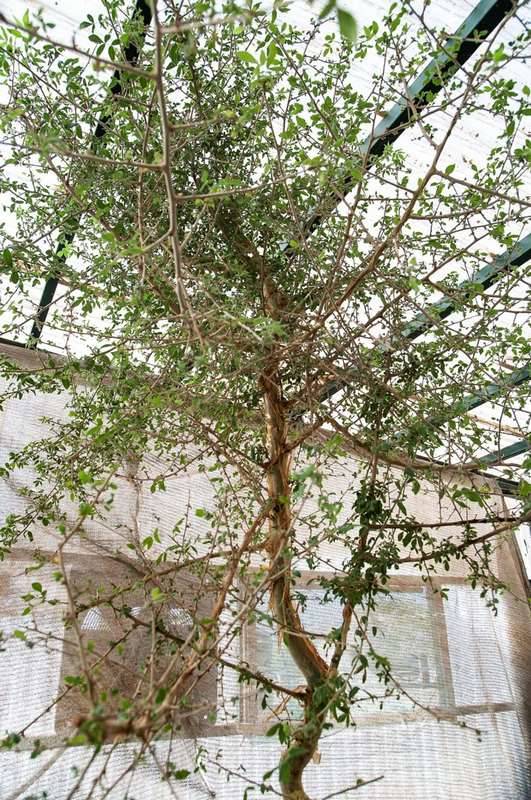
Pictured: The tree, now 14 years old.
Dr. Sallon and her team thought it was an extinct species known from history as Judean Balsam, but the best way to confirm that suspicion would be to have some aromatic traces similar to the resins of the myrrh tree to which it is related. However, no such fragrant compounds were detected.
Instead, the chemical analysis of the leaves identified a group of phytochemicals known as guggulterols which have been observed in a related species called Commiphora wightii that’s known to possess certain cancer-fighting properties in its resin.
A medicinal balm, the origin of which is not known, is mentioned in multiple historical texts including the Bible as ‘tsori,’ and rather than the fragrant Judean Balsam, it’s this tsori that Dr. Sallon and her team believe they have found.
They must wait until the tree, now 14 years old, produces flower or fruit to know for sure if it’s an extinct species, and if so, how to perhaps keep it alive.
Dr. Louise Colville, senior research leader in seed and stress biology at Royal Botanic Gardens, Kew, in London who wasn’t involved in the research, told CNN that it was a major accomplishment to grow a seed that old and possibly lead to a resurrection of this Biblical botanical.
“What’s surprising in this story is it was just a single seed and to be able to have one chance for that to germinate is extremely lucky,” she said.
“Working in a seed bank, seeing the potential for that extreme longevity gives us hope that banking and storing seeds that some at least will survive for very long periods of time.”"
-via Good News Network, October 8, 2024
--
Note: This is such a good demonstration of why seed banks are so important!! They give us such real and massive hope for deextinction and the revival of endangered species.
#botany#plant biology#endangered species#extinct species#deextinction#ancient medicine#jerusalem#biblical#medicinal plants#seeds#seed bank#good news#hope#paleobotany
9K notes
·
View notes
Text
Blueberries, Strawberries Again on The ‘Dirty Dozen’ List
— By Sandee LaMotte | Wednesday March 20, 2024
CNN — Approximately 95% of Nonorganic Strawberries, Leafy Greens such as Spinach and Kale, Collard and Mustard Greens, Grapes, Peaches and Pears tested by the United States government Contained Detectable Levels of Pesticides, according to the 2024 Shopper’s Guide to Pesticides in Produce.
Nectarines, Apples, Bell Peppers and Hot Peppers, Cherries, Blueberries and Green Beans rounded out the list of the 12 Most Contaminated samples of produce. It’s dubbed the “Dirty Dozen” by the Environmental Working Group, or EWG, an Environmental and Health Advocacy Organization that has produced the annual report since 2004.
Pesticides have been linked in studies to preterm births, congenital malformations such as neural tube defects, spontaneous abortions and an increase in genetic damage in humans. Exposure to pesticides has also been associated with lower sperm concentrations, heart disease, cancer and other disorders.
Farmworkers who use or are exposed to pesticides are at highest risk, according to studies. A 2022 meta-analysis found workers exposed to pesticides were nearly five times as likely to have DNA damage while a February study found children exposed at an early age showed poorer neurodevelopment from infancy to adolescence.
It’s not all bad news. Avocados, Sweet Corn, Pineapples, Onions and Papayas led the “Clean Fifteen” list of conventionally grown produce with the least amount of trace pesticides — nearly 65% of the fruits and veggies in that grouping had no detectable pesticide residues, according to the report released Wednesday.
Rounding out the “Clean Fifteen” were Frozen Sweet Peas, Asparagus, Honeydew Melons, Kiwis, Cabbage, Watermelons, Mushrooms, Mangoes, Sweet Potatoes and Carrots.
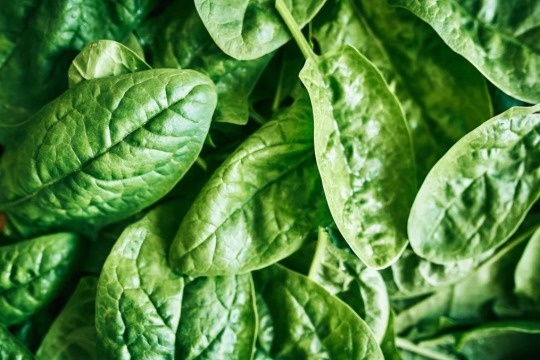
Crops which grow close to the ground, such as Strawberries, Spinach and Other Leafy Greens are Particularly Subject to Pests. Ekaterina Goncharova/Moment RF/Getty Images
Washed, Peeled and Scrubbed
Each year, a rotating list of domestic and imported produce is tested by US Department of Agriculture and US Food and Drug Administration. Staffers at the USDA Pesticide Data Program wash, peel and scrub fruits and vegetables as consumers would, while workers at the FDA only brush dirt off the produce. Then the fruits and vegetables are tested for more than 250 different pesticides and the results are posted online.
For 2024, EWG researchers examined testing data on 47,510 samples of 46 nonorganic fruits and vegetables, with the majority of testing from the USDA. An analysis of that data found traces of 254 pesticides in all fruits and vegetables analyzed, with 209 of those chemicals on produce in the “Dirty Dozen” list.
“We find that what ends up on one list versus the other reflects how those fruits and vegetables are grown,” said Alexis Temkin, EWG’s senior toxicologist. “Avocados, for example, aren’t pesticide intensive, while strawberries grow very close to the ground and have a lot of pests.”
Report Is Unfair To Farmers, Critics Say
About 70% of nonorganic produce tested by the USDA and FDA have pesticide levels within the legal limits allowed by the US Environmental Protection Agency, according to the EWG report. That fact makes the report misleading, said Carl Winter, emeritus professor of cooperative extension at the University of California, Davis.
“The dose makes the poison, not its presence or its absence, and that dose determines the potential for harm. In many cases you’d have to be exposed to a million times more than what we’re exposed to before you’d even see any effects,” said Winter, speaking on behalf of the Alliance on Food and Farming, which represents organic and conventional farmers.
However, “legal levels do not mean safe levels,” Temkin said in response. She pointed to times when regulators allowed potentially dangerous chemicals, such as the pesticide DCPA, to remain on the market long after scientific research had raised concerns. The herbicide was linked to thyroid concerns for years before the EPA told the public the chemical posed “significant risks to human health” in 2023.
Another example: chlorpyrifos, a pesticide linked to brain damage in children and fetuses. The American Academy of Pediatrics joined EWG in 2017 protesting the EPA’s continued approval of the chemical.
“No Washing Method Is 100% Effective For Removing All Pesticide Residues!”
In addition, pesticides banned by the government continue to show up on crops sold in the US, according to the EWG report.
“Green beans for example, continue to show traces of acephate, a toxic pesticide the EPA banned for use on green beans more than 10 years ago,” Temkin said. “A lot of pesticides found on the ‘Dirty Dozen’ have also been banned in the European Union because of their harmful effects on human health.”
Another concern from critics is that the “Dirty Dozen” list is insulting to multigenerational farmers who struggle to grow food for the nation and feed those same products to their own children, said Steve Clement, CEO of Pacific Northwest Tree Fruit
“When this report comes out it’s like getting stabbed a little bit because we’re working so hard to put out a nice healthy product, and the implication of the ‘Dirty Dozen’ list is that it is unhealthy,” Clement said. “It’s like doing something kind for somebody and then having them turn around and call you some sort of monster.”
The report may scare people away from eating the fruits and vegetables they need, said Neil Nagata, whose family has grown organic and conventional strawberries in Oceanside, California, for decades.
“Every time the report comes out, or there’s a scare on imported strawberries, we see our sales drop off,” Nagata said. “It’s not as if we’re doing something that is wrong or incorrect, we’re actually producing very healthy, safe food. In fact, we actually live in the strawberry field and my father is 100 and my mom is 97, and they still eat strawberries.”

Some farmers feel the term "Dirty Dozen" is insulting, according to the Alliance on Food and Farming. Kcline/iStockphoto/Getty Images
It is important that people eat lots of fruits and vegetables, even conventionally grown, said EWG’s Temkin.
“We always emphasize that,” she said. “We want to enable consumers who wish to avoid as many pesticides as possible by opting for organic versions of the ‘Dirty Dozen,’ where pesticide levels will be lower, and then, if they wish, choose less expensive conventionally grown produce from the ‘Clean Fifteen.’”
Organic produce is not more nutritious, but studies have found that levels of pesticides in the urine of adults and children can drop up to 95% after a switch to an organic diet.
Fungicide Levels Were High
For the first time, EWG analysts looked at reported levels of fungicides, one form of pesticide used to kill fungal diseases such as powdery mildew.
“Four out of five of the most frequently found pesticides on the ‘Dirty Dozen’ list were fungicides, and they were also found in particularly high concentrations,” Temkin said.
Two fungicides — fludioxonil and pyrimethanil — had the highest concentration on the “Dirty Dozen” list of any other pesticide, according to the report. Fludioxonil was found on 90% of peaches and nearly 30% of all “Dirty Dozen” samples, according to the report. Pyrimethanil was found on 65% of pear, 30% of apple, 27% of grape, 26% of strawberry and 24% of nectarine samples.
“Fungicides are often applied after harvest to keep produce mold-free on its way to market. That’s likely why the concentrations were so high on some samples – higher than other pesticides applied earlier in the growing season,” Temkin said. “The application of the fungicide is also closer to the time the produce is put on store shelves and consumers are eating them.”
Fludioxonil creates a waxy coating on the fruit or vegetable that studies find is difficult to wash away. While the EPA finds fludioxonil safe at regulated levels, some studies have raised concerns that it might disrupt hormone and neurological systems. Exposing breast cancer cells to fludioxonil in a petri dish found the fungicide increased cell production by 1.5%.
Pyrimethanil was classified as a “possible human carcinogen” by the EPA in 2004, but the agency determined in 2015 the chemical was “not likely to be carcinogenic to humans” at low doses. Studies have shown it to be toxic to tree frogs and aquatic life, and it may disrupt thyroid levels in pregnant women living in agricultural areas. In lab tests, pyrimethanil and fludioxonil were show to impact androgen activity — hormones that contribute to growth and reproduction in both men and women.
Ways To Reduce Pesticides In Your Food
Cleaning fruits and vegetables before eating does reduce pesticide levels, but “No Washing Method is 100% Effective For Removing All Pesticide Residues,” according to the National Pesticide Information Center.
Starting with clean hands, wash and rub produce under running water instead of soaking to remove the most pesticide, the center recommends on its website.
Don’t use soap, detergent or a commercial soak or scrub, however, as they have not been proven to be any more effective, according to the FDA. Dry the produce with a clean cloth or paper towel to further reduce bacteria that may be present.
#Life But Better Food 🍲 🍱 🥘#Blueberries 🫐 🫐 🫐 | Strawberries 🍓🍓🍓#Sandee LaMotte#CNN#Los of “Dirty Dozen”#2024 Shopper’s Guide to Pesticides | Produce#Leafy Greens 🥬#Spinach#Kale 🥬#Collard#Mustard Greens 🥬#Grapes 🍇 | Peaches 🍑 | Pears 🍐#“Clean Fifteen”#Avocados 🥑 | Sweet Corn 🌽 | Pineapples 🍍| Onions 🧅 | Papayas#Environmental Working Group (EWG)#Environmental and Health Advocacy Organization
0 notes
Text
I have less homework this semester than last semester but gah . It is much longer/harder than last semester
#I only have one assignment per week for psychology#but that can take me an hour or longer cause I have to read a textbook chapter for it (usually)#environmental science is pretty easy#just have to remember to do prelab stuff every Wednesday#and do the study guides when possible#but I have also . not started my honors project for that class . which I really should#English is mostly long papers with far enough away due dates where I can space them out decently#and maybe an occasional quiz or small assignment#not excited about this annotated bibliography we have to do though…#and critical reading is . critical reading#lots of quick easy assignments each week#but now that we’re starting our reading group activities I have to read a few chapters from a book each week#so that’s fun#tbf it’s A Brave New World#so I’m excited to read it#but still#simultaneously more and less work than last semester
0 notes